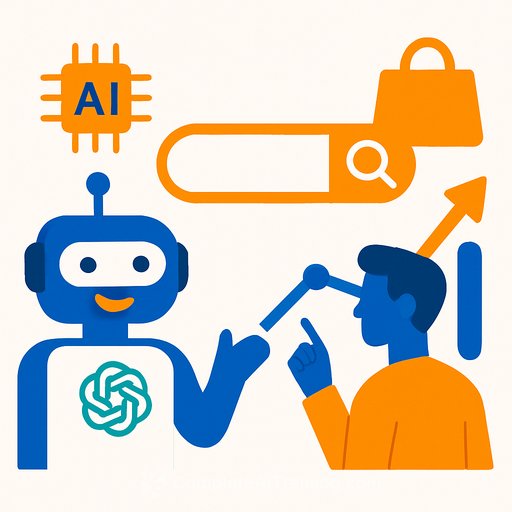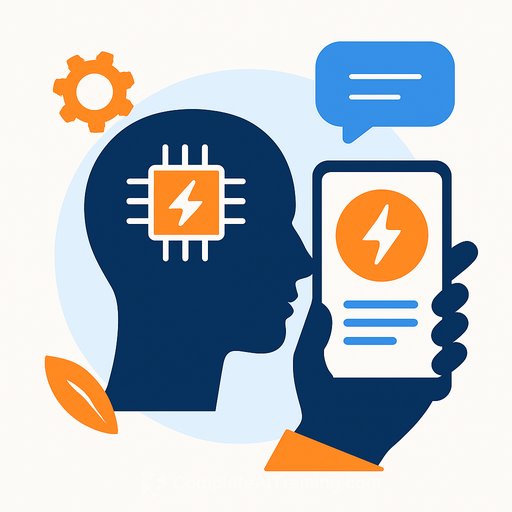Have You ChatGPT’ed Yourself?
The way we search for information is changing. Google is no longer the automatic choice for every question. As of early 2025, ChatGPT has surpassed 400 million weekly users, growing 30 percent in just a few months. Meanwhile, Google’s search market share dipped below 90 percent for the first time since 2015. This shift reflects a new preference for AI-powered answers that cut through the noise and deliver clarity.
One telling example is a Wall Street Journal headline: “I Quit Google Search for AI—and I’m Not Going Back.” This change affects how communicators manage brand perception and influence behavior. AI chatbots let us engage directly with audiences, bypassing traditional gatekeepers and contributing content that large language models (LLMs) pull from. Here are three key ways AI is reshaping online information sharing and what communicators should focus on.
GEO: Generative Engine Optimization Means Monitoring Your Brand Closely
With LLMs summarizing search results, users often stop at the AI-generated snippet instead of clicking links. This means your brand’s online presence depends on how AI interprets and presents your content. Without active monitoring and optimization, your message can be misrepresented or lost.
Misinformation can spread quickly and damage reputation. Solutions like Ruder Finn’s rf.aio monitor platforms like ChatGPT, Perplexity AI, and Gemini. They track accuracy, brand awareness, and amplification to offer actionable insights and recommend fixes.
For example, a global company discovered its leading product wasn’t even mentioned in AI search results for its category. Since LLMs influence what consumers see first, training these models to recognize your brand and provide correct information is critical. Taking control of this narrative is now a frontline task for communicators.
GEM: Generative Engine Marketing Highlights the Rise of Paid Prompting
Paid media has long been a cornerstone of marketing. Now, AI chatbots are introducing new advertising opportunities through paid prompting. Platforms like Perplexity are testing “sponsored” follow-up questions that let brands respond directly to user queries.
This opens doors for new formats and partnerships. The data brands provide to these AI agents must be precise and comprehensive. Consumers expect personalized, multi-modal responses, not generic answers.
ChatGPT’s launch of a restaurant plugin with OpenTable is a good example. It offers users a seamless dining recommendation experience, integrating multiple steps in one interaction.
To succeed, businesses should craft concise, complete answers backed by credible sources. Clear, well-structured content is more likely to be favored by AI and users alike. For more on adapting marketing strategies to AI, Fast Company offers practical advice.
Custom LLMs to Boost Consumer Experience: Virtual Agents as Personal Advisors
Consumers want quick, relevant answers. Proprietary virtual agents provide personalized guidance and simplify complex choices. L’Oréal’s Beauty Genius app is a prime example, using data-driven AI to engage users effectively.
Companies like Klarna and Comcast use internal AI assistants to handle customer requests faster and improve satisfaction. Comcast’s “Ask Me Anything” program helps agents offer human support enhanced by real-time AI, cutting unanswered queries by nearly 12 percent and increasing positive feedback by 9 percent.
Prudential Financial is pushing boundaries with virtual employees that create personalized web content using demographic and real-time data. These AI “employees” operate within brand guidelines and legal frameworks, showing how AI can take on content creation at scale.
The trend is clear: consumers increasingly want to find solutions themselves, and brands must meet this demand with AI-powered personalization and support.
Talking to Machines Requires a New Mindset
Interacting with AI is different from traditional communication. It’s essential to learn how AI processes and interprets information so your messaging remains sharp and impactful.
For PR and communications professionals, this means mastering AI-driven tools to maintain brand integrity and influence. Those who adapt will lead, while others risk falling behind as AI becomes a core part of how people find and trust information.
To stay ahead, consider exploring practical AI training options designed for communicators at Complete AI Training.
Your membership also unlocks:






